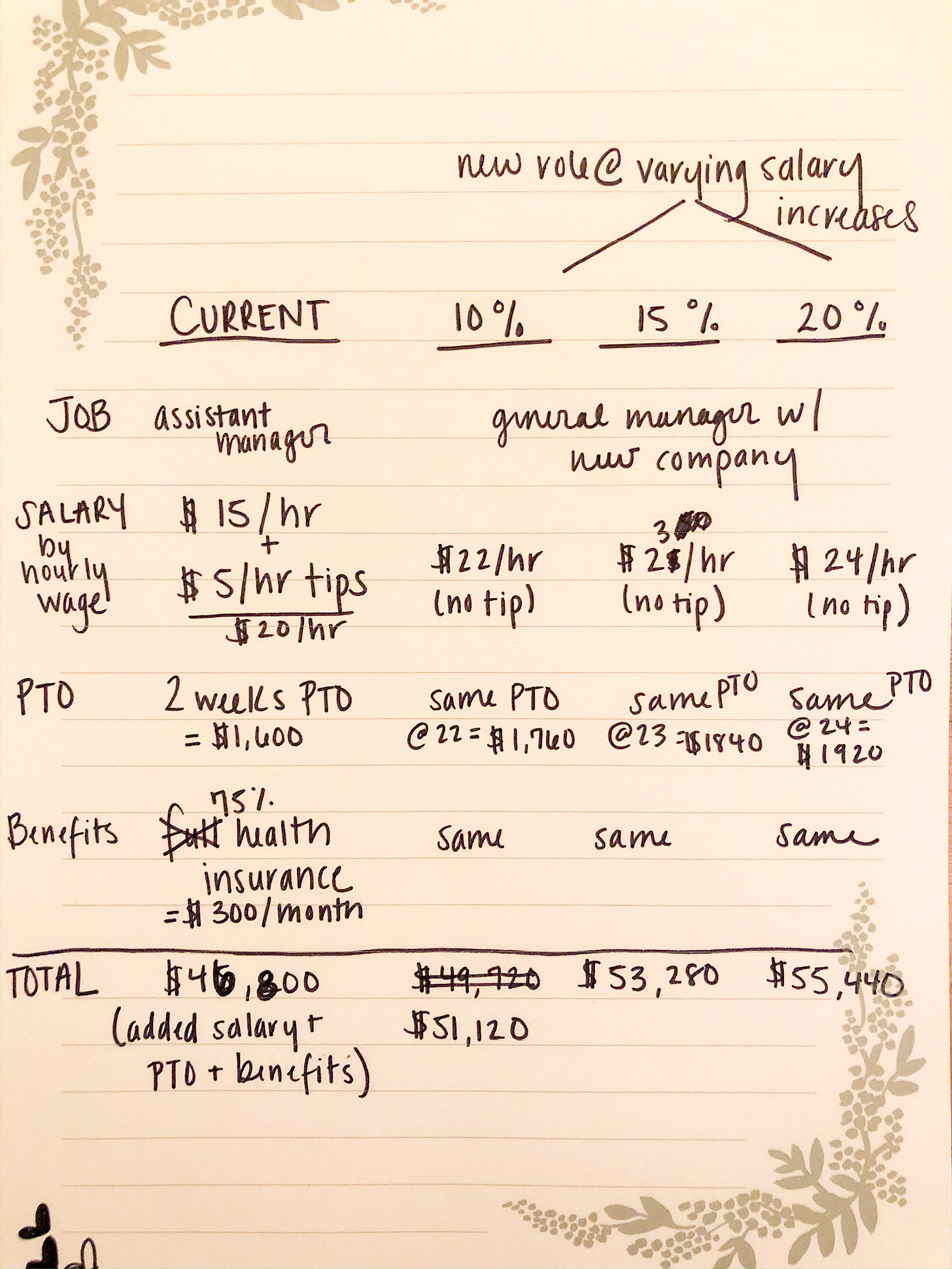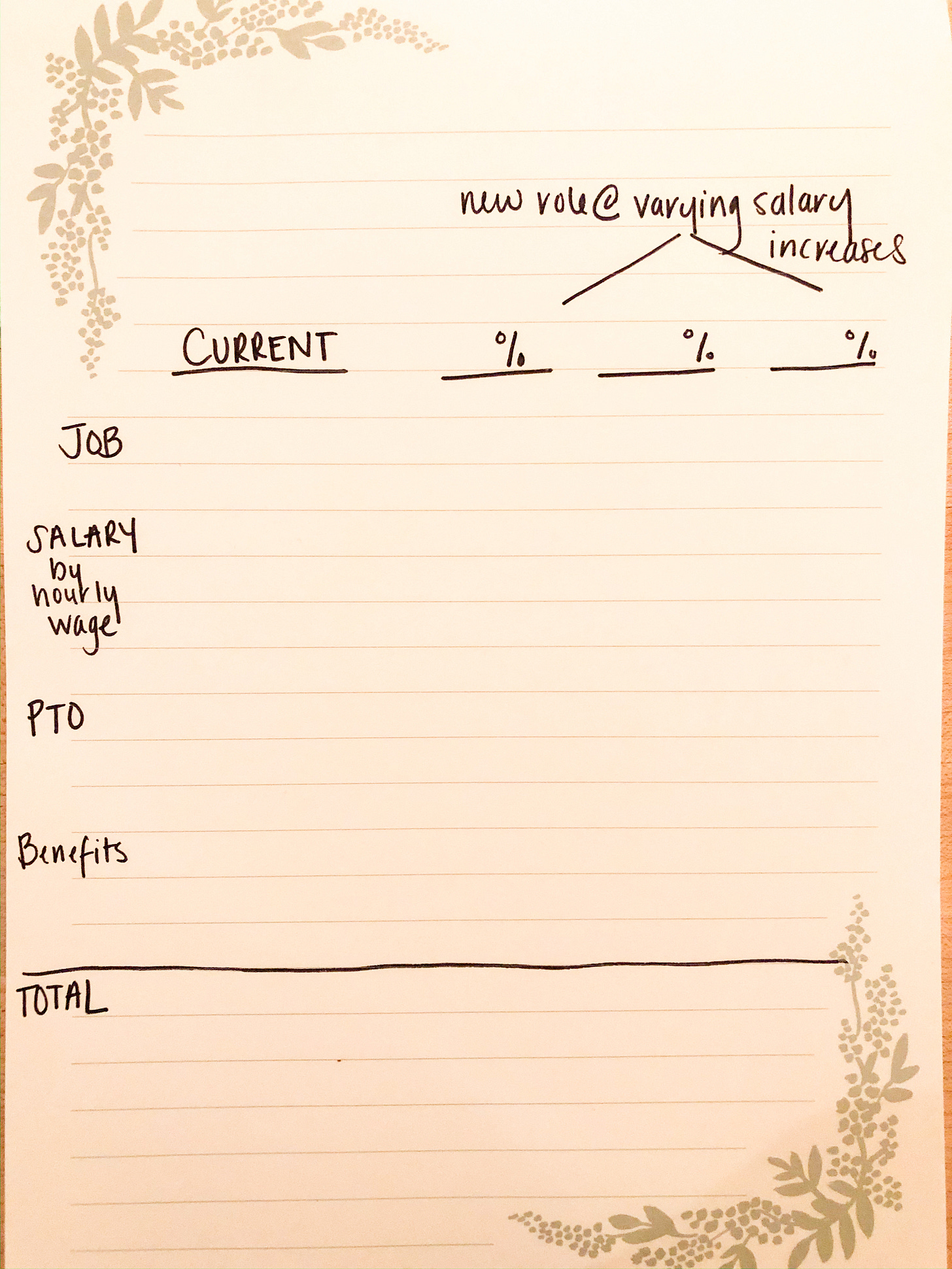If you’re not signed up for this newsletter, then welcome! I’m glad you found your way here! But like sign up, will ya? There’s a cute little button for you to do so.
And if you like this writing, consider donating to my Patreon. Any size pledge helps!

How much money should you ask for when you accept a new job?
I get a lot of DMs about money. They are the best messages I receive.

People change jobs all the time. We move from position to position within a company, and from company to company when we’ve either reached our ceiling or feel unfulfilled in our work or when our position gets phased out or whenever we damn well feel like it. When you move into a new role, it can be difficult to know how much money you should expect to make.
Recently, someone asked me how much money they should expect moving both to a new company and into a new role. They were going from an assistant manager to a general manager, and while I can’t give an exact figure for this new role, I made this handy chart for them:

A note: I changed the exact figures to protect the identity of this person. I also used $15 an hour as an aspirational amount for all service workers—if I use the imaginary $15 an hour consistently, then it’ll come true, right?
While I made this chart, I asked this person a few questions:
Are you moving from a position that’s tipped to a position that’s not tipped?
If so, have a good handle on what your average tips are in your old position. It doesn’t have to be exact, but that’s money! Although difficult to pinpoint exactly, tips are money you earn and your new salary or wage needs to account for that.
Let’s say you make $15 an hour + $5 an hour in tips. If your next position is an untipped job, you need to make at least $20 an hour. If it’s a promotion or a step up, it should be more than $20. Be ready to present this information in your job interview—you don’t have to have proof or pay stubs that show this, but you should be able to speak confidently to the amount you make.
Do you have benefits? Can you quantify them?
Treat benefits like they are money. If you get two weeks vacation, do the math to figure out how much of your salary that’s worth. Likewise, if you get any health insurance benefits, see how much that saves you every year versus entering the open market. And there are tons of other benefits that might not seem obvious, like staff meal, free coffee, access to free items for you and a friend, relationships to local businesses, transit cards, or parking stipends. Even if these things are difficult to quantify, try to estimate so you have a number in mind.
In the role above, the person would receive roughly the same benefits in their new position (PTO and healthcare) so we were able to take that out of the equation. However, if your new role has fewer benefits, you should try to add what you think the monetary value of those benefits are to your new base salary.
One of the wonky things I did in the above chart was quantified PTO and health benefits like they were money. Obviously, these perks aren’t money, but that doesn’t mean they don’t have value. You should know what their value is worth.
In some states, if you don’t take PTO you can cash it out at the end, so if you do leave a job, you could end up taking home the amount your PTO is valued at. The reason I did this was to demonstrate how valuable benefits are—and how you might want to think about them if you’re looking at a job with fewer benefits. So the “total” at the end of the chart doesn’t necessarily represent monetary value but the total value of a position.
Is this a promotion? How much of a promotion?
If you’re moving into a role that clearly carries more responsibilities than your previous role (moving from assistant manager to general manager couldn’t be clearer) then your salary should go up. How much it goes up is the real question.
In the example above, I outlined what a 10%, 15%, and 20% raise would look like. I can’t say for certain which of these raises is right, but to me, this felt correct for a move from assistant manager to manager, which seems the next logical promotion. I might have suggested a higher or a lower range if this person was moving into a regional position, or if they were switching gears entirely into a new department.
Figuring out the right range is a combination of measuring the scope of the job, the capabilities of the company to meet your salary demands, the cost of living in your city, along with a number of other factors. It’s an inexact science.
Talking about money is hard, and I think the best advice I can give (besides the advice in this article about artfully asking your employer to disclose their salary range before you disclose yours) is to know exactly how much money you make—and where your money comes from. The biggest mistake I see people make is undervaluing tips. Factor tips into your salary negotiations!
Take time to write out everything that comes with your current job. If you make an hourly wage and your new job is offering you a salary, figure out how much that salary translates to an hour. A person making $15 an hour + $5 an hour in tips is making about $41,600 a year, so if you’re offered a new role at your company at $40,000 without tips, you’re actually taking a pay cut. This happens all the time.
So if you can, pause for a moment and figure out how much you make in your current role. I even left you a blank worksheet to assess how much you should ask for!

Lastly, assess where you’re willing to negotiate, and where you want to take a firm stance. If you can’t negotiate the salary you want, but still want to take this new job, maybe you can ask for a salary renegotiation in six months, or work out a benefit that makes sense for you. The point of this exercise isn’t to get a 15% wage increase, but to help make informed decisions, and know exactly how much money you’re actually talking about when you apply for a new job.
Photo by Mirza Babic on Unsplash
Hold up! You made it to the bottom of this article! Thank you so much for reading! If you could do any or all of the following things, that’d be incredibly helpful!
Click the ‘heart’ at the bottom to say you liked this article!
Consider checking out my Patreon!
Share this with a friend, on your social media, anywhere! Here’s a button for you to do so!



